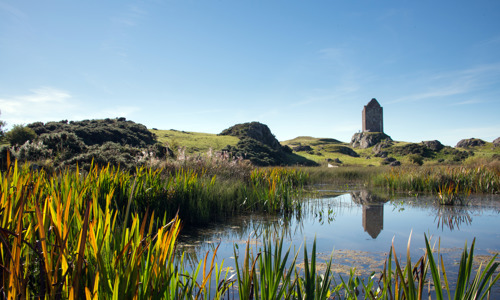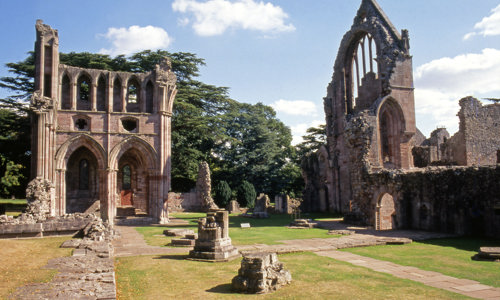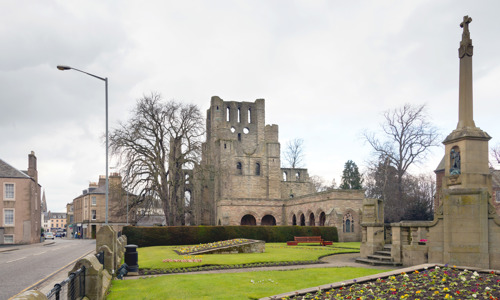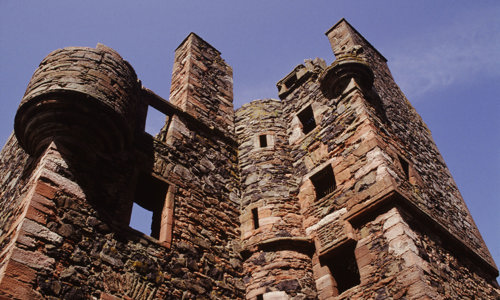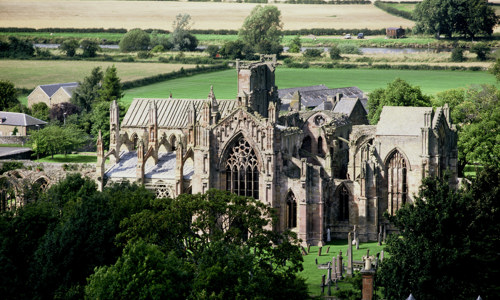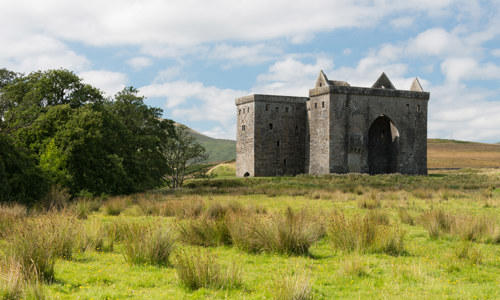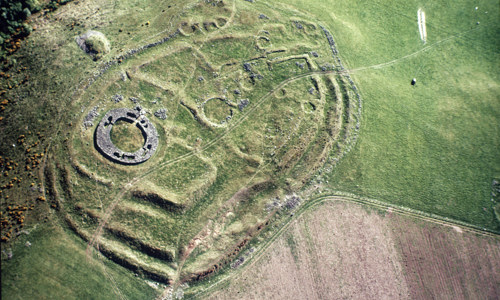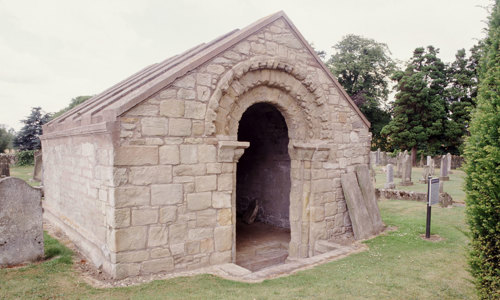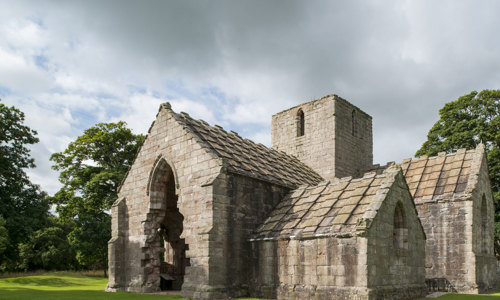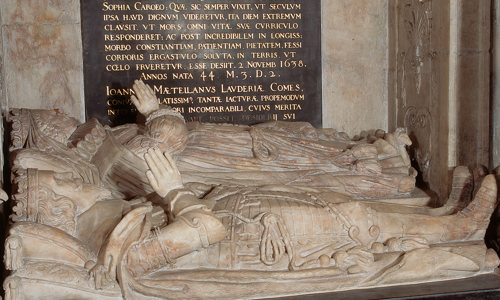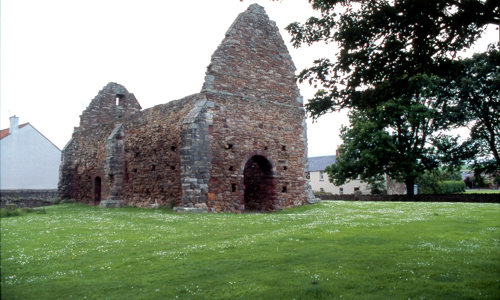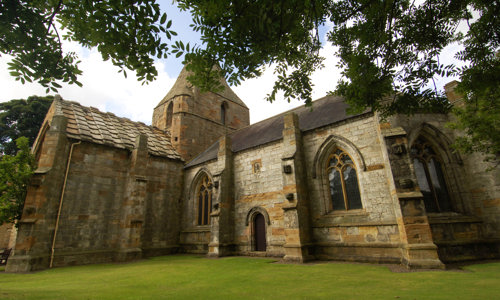History
Jedburgh had been an important religious site for 300 years when the Augustinians arrived in 1138. No buildings survive from this earlier period, but many artefacts and archaeological finds give an insight into life before the abbey.
The visitor centre displays some exceptional carved stone fragments such as crosses and a sarcophagus. These date from the 700s to 1000s and are similar in style to Northumbrian work from the time.
Augustinian abbey
Jedburgh is one of the four great abbeys established in the Scottish Borders in the 1100s. David I founded a priory here in 1138 and raised it to abbey status in 1154. The brethren may have come here from St Quentin Abbey, near Beauvais, France.
Augustinians were priests who for the most part lived a secluded and contemplative life, but also went forth to minister to the people.
Monastic life was largely routine. But the abbey’s border location meant it was caught up in the conflict between Scotland and England in the later Middle Ages. The canons had to evacuate the premises during the Wars of Independence in the 1300s.
The demise of Jedburgh’s monastic life was sealed by:
- further attacks in the 1400s
- major raids in the 1500s
- the Protestant Reformation of 1560
Royal patronage
The Augustinians contributed to royal governance, and their houses could sometimes be found near to royal power centres:
- Holyrood Abbey is near to Edinburgh Castle
- Cambuskenneth Abbey is below Stirling Castle
Jedburgh Abbey served the royal castle in Jedburgh. In 1285, Alexander III and his new queen, Yolande de Dreux, were married in the splendid abbey church. Legend says that a ghostly figure appeared before the congregation and foretold the king’s death. Alexander died the following year, after falling from his horse.
Architectural masterpiece
David I wanted his new abbey to show his power and authority over the border region – a ‘debatable land’. The abbey still impresses today, almost 900 years later, despite war and weather. The cloister is mostly reduced to stone foundations, but the great abbey church of St Mary the Virgin stands almost complete.
It took more than 70 years to largely complete the building – during which time its status changed from priory to abbey. Architectural fashions changed too – from Romanesque to Gothic.
Building began from the east end, the most sacred part of any church. Its Romanesque features include chunky cylindrical pillars and round-arched windows. In contrast, the nave, begun about 1180, has more delicate Gothic architecture, with its graceful sweep of pointed-arch arcades and magnificent west front.
The abbey church was largely complete by about 1200, but war damage and other misfortunes led to some additions and rebuilding work. The west gable’s great rose window, dating from about 1440, is the most impressive aspect of this later work.
Border abbey, border warfare
Set so close to the border, and with its royal castle and wealthy abbey, Jedburgh was a tempting target. It was frequently fought over during the Wars of Independence (1296–1356) and again in the 1400s and 1500s.
Edward I stripped lead from the abbey roof in 1305. More destruction followed from the 1520s to 1540s, when English and Franco-Scottish armies fought for control of town and abbey. Evidence of the damage can still be seen. Traces of lowered rooflines and inserted partition walls show where areas of the abbey deemed derelict were separated from those areas still fit for use.
On the eve of the Protestant Reformation of 1560, the abbey housed an embattled and entrenched community.
Treasures on display
On display in the visitor centre are works of art associated with the early history of the site and some of the artefacts discovered during the excavations.
The most famous object is the Jedburgh Shrine – a fragment of a richly carved stone sarcophagus. Its design is similar to crosses and other carvings also from the early 800s found in northern England.
Other finds help to tell the story of daily life in the abbey and include gaming tokens, which show that even monastic life had its lighter moments.


